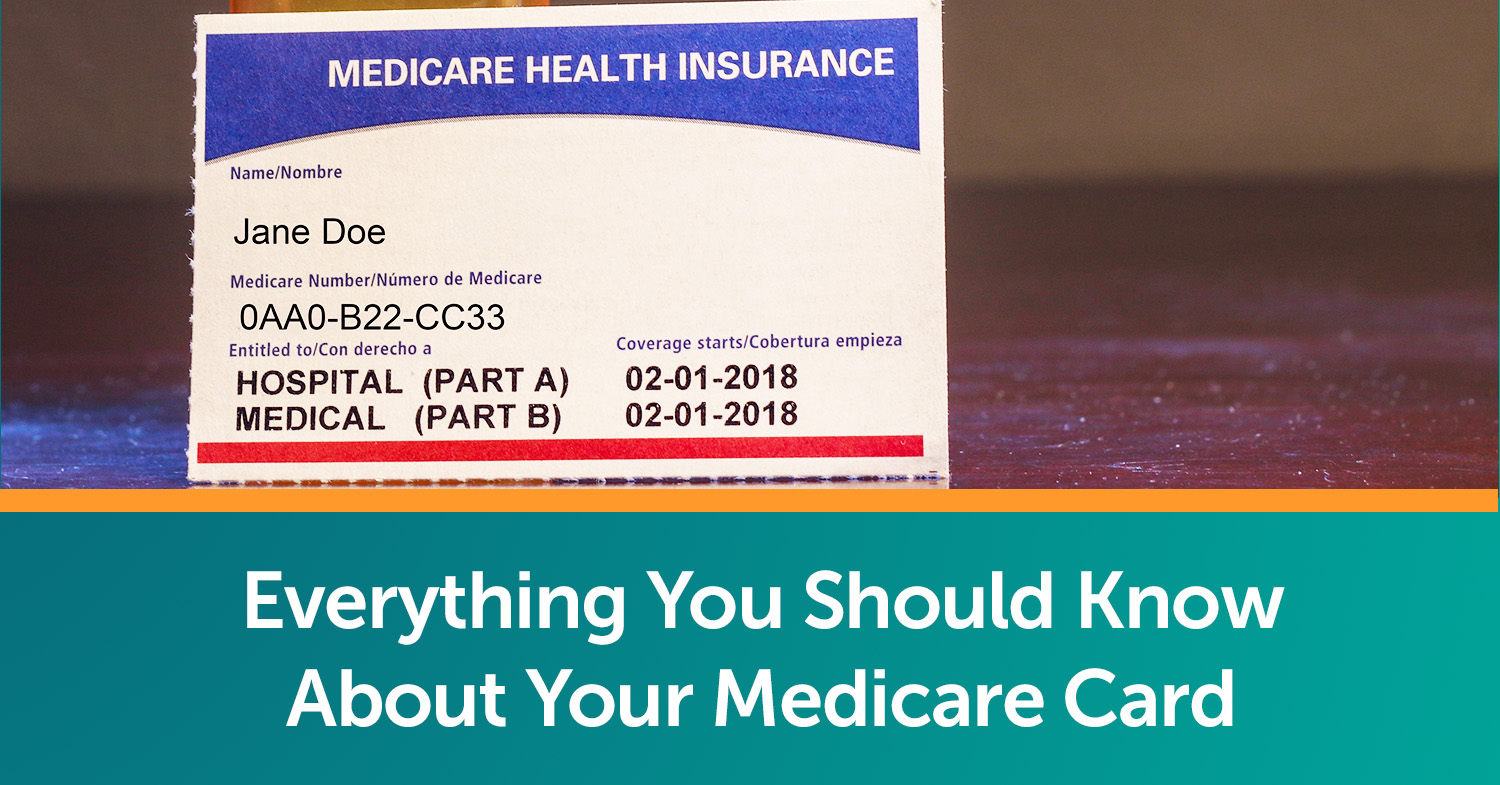Your Medicare card is an important little piece of plastic, and it’s essential to understand how it works. Read on to learn the basics of your red, white, and blue Medicare card.
How to Get a Medicare Card
Applying for a Medicare card is the same as enrolling in Medicare. Typically, if you’re getting benefits from Social Security or the Railroad Retirement Board, you’ll be automatically signed up for Medicare Part A and Part B when you’re first eligible. If you aren’t getting any benefits, you’ll need to sign up for Part A and Part B yourself when you turn 65. You don’t have to wait for your 65 birthday to sign up, though. You can sign up during the Initial Enrollment period, which is three months before your birth month, your birth month, and three months after.
Now, back to your Medicare card. When you receive your card depends on how you signed up. If you’re automatically enrolled, your Medicare card should be mailed to you about three months before you turn 65. If you enroll yourself, your card will arrive 3-4 weeks after enrollment. Enrolling in Medicare at the beginning of your Initial Enrollment period will help to avoid delays and make sure your card is in hand when your coverage begins.
Understanding Your Card
Your Medicare card, while small, is a valuable document that provides important information about your healthcare coverage. Besides your full name, it will have the following details:
- Medicare number. This is one of the most important pieces of information on your Medicare card. This is a unique Medicare number assigned to you, similar to a Social Security number (SSN). Your SSN and Medicare number used to be the same, but now, your Medicare number is a more secure, randomly generated combination of 11 numerals and capital letters. This is used to identify you when receiving medical services and billing Medicare for them. Remember – this is confidential and should only be shared with people you trust.
- Medicare plan type. The card will also indicate whether you’re enrolled in Medicare Part A and Part B. If you have Part A, labeled HOSPITAL, you are entitled to care in a hospital or skilled nursing facility, hospice care, and home health care. If you have Part B, labeled MEDICAL, you are entitled to medical care and preventative services. The date your coverage begins will also be included.
If are enrolled in a Medicare Advantage plan and/or a Part D Prescription plan, you will receive separate ID cards. You should use your Medicare Advantage card as your primary Medicare card, but you should still keep your Medicare card in a safe place.
Why You Need It
So, why do you even need a card? First off, it provides access to healthcare services. Healthcare providers, hospitals, and pharmacies require your Medicare card to verify your eligibility and provide services covered under your Medicare plan. Your card also ensures accurate processing and prompt payment for services you use. Last but not least, your Medicare card contains personal information, such as your name and Medicare number. It serves as identification when you need to verify your Medicare status. It’s crucial to keep your Medicare card secure to prevent identity theft and fraudulent activity.
When You Should Carry It
It’s a good idea to carry your Medicare card with you whenever you’re away from home. Whenever you are seeking care, you’ll need to show it to doctors, hospital staff, and other healthcare providers. In case you ever have an accident, you’ll be prepared by having your card in your pocket.
How to Replace It
If you lose your Medicare card, don’t despair – it’s fairly easy to get a replacement. You can call Medicare at 1-800-633-4227 to order a replacement card to be sent in the mail or you can log into your secure Medicare account to print or order an official copy of your Medicare card. If you’re having a card delivered to you, know that it can take a little time to reach you, so be patient. You can expect your replacement card within 30 days.
Once you receive your replacement card, take some precautions to avoid losing it and having to order one again. When carrying it with you, keep it in a secure wallet or purse. Write down important numbers (like your Medicare number), and keep everything in a safe place so that you have a record for future reference if anything gets lost again. And we can’t state this enough – be cautious about sharing your Medicare information with others, as it contains sensitive personal data that someone can steal.
Jeffery Insurance Is Here to Guide You
Still have questions about your Medicare card, or do you need help understanding Medicare in general? We’re here to help. We can answer your questions, help you understand Medicare, and help you find the coverage that will suit your needs best. Even after you sign up for a plan, we will be available every time you need us. We are based in Scottsdale but are happy to assist you no matter where you are in Arizona. Jeffery Insurance is Arizona’s health care resource!







